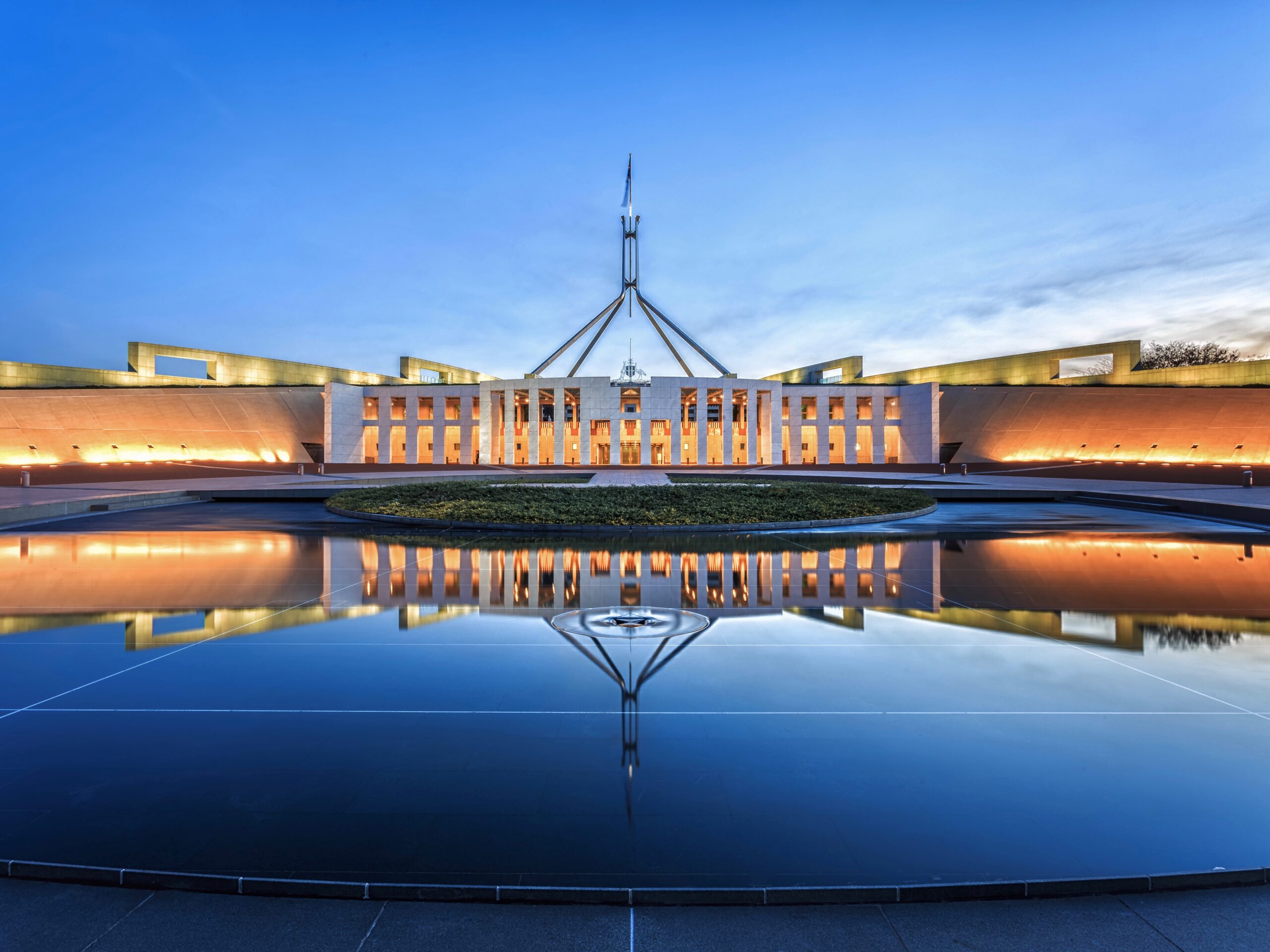Summary
Treasurer Jim Chalmers has used his first Budget to implement some of the new Government’s election promises and make cuts to the former Government’s programs. This is a ‘mini budget’, which sets the scene for Labor’s first full Budget in April or May next year.
As such, there were no significant changes to funding for the ARC or the NHMRC research funding programs in the next two years, with modest increases across a range of funding programs in the following two years . It seems that any major increases in funding health and medical research will have to wait until the Budget situation improves.
The rising cost of living has continued to be a key political issue. In the March Budget, the CPI was forecast to be 3.0% for 2022-23 and 2.75% in 2023-24. In tonight’s Budget inflation for this year is expected to be 7.75% for 2022-323 and 3.5% in the next financial year. Rising inflation also affects health and medical research, making the cost of undertaking research higher. As noted above, the Government has once again failed to address this issue, with increases in funding for the NHMRC and ARC announced in the March Budget and maintained tonight failing to even keep pace with inflation.
Revamping Primary Care
The Treasurer has announced a $2.9 billion package to drive an innovative revamp of Australia’s primary health care system including $100 million to co-develop and pilot innovative models with states and territories to improve care pathways and inform program roll out. The new models of care will make it easier for Australians to see a healthcare professional when they have an urgent, but not life- threatening, need for care.
Comprehensive Cancer Centres
In a win for research-active healthcare, the Government has announced tonight $375.0 million over 6 years from 2022–23 to contribute to the establishment of the Queensland Cancer Centre in Brisbane. The centre will be owned and operated by the Queensland Government and will be located within the Herston Health Precinct at the Royal Brisbane and Women’s Hospital.
There is also $77.0 million over 5 years from 2022–23 to contribute to the establishment of the Bragg Comprehensive Cancer Centre in Adelaide. The centre is an extension of the Australian Bragg Centre for Proton Therapy and Research at the South Australian Health and Medical Research Institute.
National Centre for Disease Control
The Government is fulfilling its election promise to create a National Centre for Disease Control, with $3.2 million allocated over the forward estimates in preparatory work.
National Health Sustainability and Climate Unit
In a sign of changing health priorities, a $3.4 million investment in the Budget will establish a National Health Sustainability and Climate Unit and develop Australia’s first National Health and Climate Strategy.
National Reconstruction Fund
The National Reconstruction Fund is a $15 billion election promise which includes $1.5 billion for medical products over seven years. In tonight’s budget the Government has confirmed this Fund is central to its plan to invest in a stronger economy, delivering better jobs
Other announcements that affect health and medical research and innovation include:
-
- $39.0 million over 4 years from 2022–23 to increase the number and consistency of conditions screened through the newborn bloodspot screening
- The new investment of $3 billion to deliver better aged care includes $23.1m for research and consultation for reforms to in-home aged care.
There are big spending announcements in areas as diverse as Defence and infrastructure. While not on the same scale, there is some good news for STEM, including:
-
- $13.5 million over 4 years from 2022–23 to strengthen coordinated policy capability
to identify, assess and support Australian development of critical and emerging
technologies, an issue Research Australia has been tracking for some years now.
- $10.3 million over 6 years from 2022–23 for Australia to host the International Science
Council’s Regional Presence for Asia and the Pacific and to deepen Australia’s science
engagement in the region.
- $5.8 million over 5 years from 2022–23 to support women in science, technology,
engineering and maths (STEM) through the Women in STEM and Entrepreneurship
program and to undertake an independent review of existing STEM programs.
- $4.8 million over 4 years from 2022–23 to develop Australian quantum technology
through sponsoring up to 20 PhD research scholarships and encouraging collaboration
on quantum research across Australian universities. This cost will be partially met from
within the existing funding for the Department of Defence’s Next Generation
Technologies Fund.
Please read on for our summary of what this Budget means for health and medical research and innovation.
Health Portfolio
In Research Australia’s Pre- Budget Submission and our Pre-Election Statement we continued to call for increases in funding for the NHMRC’s Medical Research Endowment Account. This Budget sees the Government’s funding to the MREA continue to decline in real terms. This is of genuine concern to the health and medical research community; it jeopardises our long term research capability and increases the precariousness of research careers, especially for early and mid career researchers.
Addressing these and other issues are at the centre of Research Australia’s advocacy for a truly national health and medical research and innovation strategy, We are working with Commonwealth, State and Territory Governments to make this vision a reality.
Medical Research Future Fund
The amount of funding available from the MRFF is predicted by the Budget to be $650 million per annum over the next four years. This is unchanged from the March Budget
The funding available from the MRFF each year is dependent on the investment return on its capital. Investment returns for the MRFF were adversely affected by the COVID driven economic downturn. The previous Government has committed the MRFF to providing funding of $650 million of the next few years, regardless of the actual investment returns on the MRFF’s capital. The Albanese Government has honoured this commitment for 2022/23, requiring it to provide an additional $62 million from consolidated revenue to meet this target. (Only $598 million has been released by the Future Fund Guardians to fund MRFF commitments this year.)
NHMRC
Funding for the NHMRC’s MREA remains unchanged from the March Budget for 2022-23 and 2023-24, but is higher in the last two years of the forward estimates. Funding for the NHMRC’s programs is continuing to grow very slightly. The increase in this financial year is 1.7%, and around 1.5% in the following year before over the forward estimates. This is lower than the forecast CPI of 7.75% for 2022-23 and CPI of 3.5% in 2023-24. It also comes on top of CPI of 4.25% in 2021-22. In effect, NHMRC funding continues to decline in real terms in the next couple of years, as it has done for many years now.
| $m. |
21-22 |
22-23 |
23-24 |
24-25 |
25-26 |
| Funding to MREA
2022 Budget (OCT) |
875.751 |
877.952 |
905.160 |
922.365 |
938.095 |
| Funding to MREA
2022 Budget (MAR) |
863.266 |
877.952 |
891.094 |
905.355 |
918.985 |
| Funding to MREA
2021 Budget |
863.266 |
875.362 |
887.588 |
899.124 |
N/A |
Australian Centre for Disease Control
Fulfilling an election promise, the Government will provide $3.2 million in 2022–23 to undertake the initial design for the establishment of an Australian Centre for Disease Control. The design work will incorporate stakeholder consultations to ensure the new Centre will support improved pandemic preparedness and response, as well as the prevention of chronic disease. There is no detail about where the Centre will be located or potential partners.
Comprehensive Cancer Centres
The Government will provide $452.0 million over 6 years from 2022–23 to support the establishment of world class cancer centres in Brisbane and Adelaide. The centres will provide multi-disciplinary cancer care, research and clinical trials for all types of cancers.
Centre of Excellence in Disability Health
The Government will provide $15.9 million over 4 years from 2022–23 (and $6.6 million per year ongoing) to establish and support a National Centre of Excellence in Intellectual Disability Health (the National Centre of Excellence). Partial funding has already been provided for, with only some of this funding a new commitment.
The National Centre of Excellence will deliver a central hub of expertise, resources and research on the health care of people with intellectual disability and provide leadership in meeting the needs of people with intellectual disability.
Education Portfolio
Nearly half of all Australian health and medical research is undertaken in the higher education sector, and the Department of Education makes a significant contribution to the funding of this research through several programs, as outlined below.
ARC Programs
The Australian Research Council’s Funding Programs are critical to Australian publicly funded research, including to the life sciences and medical technologies.
Discovery Program
Over the forward estimates in this Budget, funding is slightly higher than the March Budget from 2023-24. The funding to the ARC for the Discovery Program increases by 0.8% compared to 2021/22, and by an average of 8% per annum over the next two years and 4% in 2025-26. This means that for the first time in many years the Discovery Program is forecast to increase slightly in real terms (i.e. at a rate higher than inflation).
| $m. |
21-22 |
22-23 |
23-24 |
24-25 |
25-26 |
| 2022 Budget (OCT) |
506.735 |
511.074 |
551.867 |
596.388 |
622.986 |
| 2022 Budget (MAR) |
489.188 |
511.074 |
535.915 |
562.406 |
585.206 |
| 2021 Budget |
489.188 |
494.922 |
501.162 |
509.432 |
|
| 2020 Budget |
487.016 |
487.860 |
490.610 |
|
|
| 2019 Budget |
525.537 |
538.350 |
N/A |
|
|
Linkage
The ARC Linkage Program had been singled out by the previous Government as an important component of Australia’s innovation system and delivering the Industry Fellows component of the University Research Commercialisation Scheme. Accordingly there is a boost to the Linkage Program’s funding in this Budget of around $11 million per annum compared to what was allocated last year. This is not enough to enable the Linkage program to fund 800 new Industry Fellowships over 10 years announced in February and keep up with inflation.
Linkage Program
| $m. |
21-22 |
22-23 |
23-24 |
24-25 |
25-26 |
| 2022 Budget (OCT) |
292.543 |
319.503 |
345.731 |
374.289 |
400.792 |
| 2022 Budget (MAR) |
325.454 |
340.820 |
357.704 |
375.595 |
390.950 |
| 2021 Budget |
325.454 |
329.948 |
334.109 |
339.622 |
|
| 2020 Budget |
323.871 |
325.240 |
327.074 |
N/A |
|
| 2019 Budget |
295.246 |
301.741 |
N/A |
N/A |
|
Research Support
In addition to providing funding for the ARC research programs, the Department of Education provides funding to universities to help cover the indirect costs of research.
In the 2020 Budget, the Government used the Research Support Program to provide a vital injection of $1 billion into higher education research in the current financial year. No further injection was provided in last year’s Budget and funding in the March Budget for 2022-23 was actually lower than was forecast in the 2019 Budget. The October Budget provides increases of around 5% per annum in the Research Support Program from 2023-24.
| $m. |
20-21 |
21-22 |
22-23 |
23-24 |
24-25 |
25-26 |
| 2022 Budget (OCT) |
|
930.659 |
951.188 |
1004.314 |
1058.779 |
1089.934 |
| 2022 Budget (MAR) |
|
930.659 |
951.188 |
978.674 |
1,002.668 |
1,028.230 |
| 2021 Budget |
1918.298 |
930.659 |
942.775 |
958.326 |
974.143 |
|
| 2020 Budget |
1918.298 |
926.490 |
929.270 |
938.107 |
N/A |
|
| 2019 Budget |
920.573 |
941.748 |
962.455 |
N/A |
N/A |
|
| 2018 Budget |
1018.879 |
1042.302 |
N/A |
N/A |
N/A |
|
Funding for the indirect costs of research funded by the MRFF is provided from the Research Support Program. With the MRFF providing hundreds of millions of dollars in funding to universities, a substantial increase in the Research Support Program is needed just to maintain the levels of research support funding for research projects at their current already inadequate level. The issue of indirect research costs remains unresolved for the whole health and medical research sector and indeed publicly funded research more broadly. Research Australia continues to call for a whole of government approach to the issue of funding indirect research costs.
Research Training
The Research Training Program (RTP) provides funding to universities to support higher degree by research students (mostly PhDs). Funding for the RTP also declined in absolute terms between the 2019 and 2020 Budgets, and has only partly recovered in the 2022 Budget. The October Budget provides increases of around $50 million per year from 2023-24.
| $m. |
20-21 |
21-22 |
22-23 |
23-24 |
24-25 |
25-26 |
| 2022 Budget (OCT) |
|
1069.181 |
1092.766 |
1153.800 |
1216.372 |
1251.497 |
| 2022 Budget
(MAR) |
|
1069.182 |
1092.766 |
1124.344 |
1151.909 |
1181.153 |
| 2021 Budget |
1054.981 |
1069.182 |
1083.160 |
1100.967 |
1119.137 |
|
| 2020 Budget |
1054.981 |
1064.392 |
1067.585 |
1077.738 |
N/A |
|
| 2019 Budget |
1057.595 |
1081.921 |
1105.710 |
N/A |
N/A |
|
Australia’s Economic Accelerator
The Australia’s Economic Accelerator was a new program announced in the March Budget which was not implemented before the election. The Albanese Government has given a commitment to fund it. This is a $1.6 billion program over 10 years, administered by the Department of Education to overcome the valley of death that currently exists between the point at which public research funding ceases (typically publication) and the point at which commercial investors are prepared to get involved. The funding in the October Budget indicates less finding this year, accounting for delays in starting the program, with slightly higher funding over the forward estimates in subsequent years.
| $m. |
22-23 |
23-24 |
24-25 |
25-26 |
| 2022 Budget (OCT) |
10.172 |
99.444 |
162.395 |
159.95 |
| 2022 Budget (MAR) |
49.160 |
99.444 |
149.498 |
154.601 |
National Collaborative Research Infrastructure (NCRIS) Program
The NCRIS Program funds vital national research infrastructure needed to support Australian research. The 2021 National Research Infrastructure Roadmap informs the 2022 Research Infrastructure Investment Plan. Areas of interest to HMR that have been nominated for the New NCRIS roadmap include synthetic biology, digital research infrastructure, collections (biobanks) and facilities to scale up materials for clinical trials.
This Budget maintains the forecast $100 million boost to NCRIS from 2023-24 and slightly more funding each following year than was forecast in March. The 2022 Research Infrastructure Investment Plan should provide more detail about how this funding will be allocated once it is completed, hopefully later this year.
| $m. |
21-22 |
22-23 |
23-24 |
24-25 |
25-26 |
| 2022 Budget (OCT) |
273.567 |
286.043 |
400.028 |
499.848 |
458.338 |
| 2022 Budget (MAR) |
273.567 |
286.043 |
396.826 |
496.739 |
454.441 |
| 2021 Budget |
273.565 |
283.922 |
391.092 |
491.265 |
|
Start Up Year
Fulfilling an election promise, the Government will provide $15.4 million over 4 years from 2022–23 (and $2.8 million per year ongoing) to establish the Startup Year program to deliver income contingent Higher Education Loan Program loans to up to 2,000 recent graduates, postgraduate and final year undergraduate students per year. The Startup Year will support students’ participation in a one-year, business-focused accelerator program at an Australian higher education provider, which will encourage innovation and support Australia’s startup community.
Industry, Innovation and Science Portfolio
National Reconstruction Fund
Fulfilling another election promise, the Government will invest $15.0 billion over 7 years from 2023–24 to establish the National Reconstruction Fund (NRF) to provide targeted co-investments in 7 priority areas: resources; agriculture, forestry and fisheries sectors; transport; medical science; renewables and low emission technologies; defence capability; and enabling capabilities.
The NRF is expected to generate revenue from investments, with policy and legislation design to follow public consultation.
$50 million over two years from 2022–23 has been allocated to the Department of Industry, Science and Resources, and the Department of Finance to establish the NRF.
Supporting Australian Science
The Government will provide $47.2 million over 6 years from 2022–23 to support the development of talent and leadership in Australian science and technology. Funding includes:
-
- $13.5 million over 4 years from 2022–23 to strengthen coordinated policy capability to identify, assess and support Australian development of critical and emerging technologies
- $10.3 million over 6 years from 2022–23 for Australia to host the International Science Council’s Regional Presence for Asia and the Pacific and to deepen Australia’s science engagement in the region
- $10.0 million over 3 years from 2022–23 to continue delivery of Questacon outreach programs to engage young Australians and science teachers in science, technology, engineering and mathematics, including through touring exhibitions for regional, rural and remote communities
- $5.8 million over 5 years from 2022–23 to support women in science, technology, engineering and maths (STEM) through the Women in STEM and Entrepreneurship program and to undertake an independent review of existing STEM programs
- $4.8 million over 4 years from 2022–23 to develop Australian quantum technology through sponsoring up to 20 PhD research scholarships and encouraging collaboration on quantum research across Australian universities. This cost will be partially met from within the existing funding for the Department of Defence’s Next Generation Technologies Fund
- $2.9 million in 2022–23 to improve the Prime Minister’s National Science and Technology Council’s provision of science and technology advice and continue support of the Prime Minister’s Prizes for Science event.
CRC Program
The Cooperative Research Centre (CRC) Program is important to health and medical research and innovation, with many of the CRCs funded over the 30 year life of the program being health related. Current CRCs include the Digital Health CRC and the Autism CRC.
The smaller CRC projects program is also relevant, with recently funded projects including the creation of better brain electrodes and development of a bionic medical device that delivers high-fidelity visual-spatial perception for blind people. Funding for the CRC Program is scheduled to increase slightly faster than forecast in the 2021 and March 2022 Budget papers.
| $m. |
20-21 |
21-22 |
22-23 |
23-24 |
24-25 |
25-26 |
| 2022 Budget (OCT) |
|
187.343
|
199.374
|
199.962
|
205.054
|
201.579 |
| 2022 Budget (MAR) |
|
189.395 |
199.374 |
193.117 |
197.070 |
193.540 |
| 2021 Budget |
222.777 |
189.980 |
197.815 |
191.042 |
193.807 |
N/A |
Modern Manufacturing Initiative
The Modern Manufacturing Initiative was a major announcement in the 2020 Budget and part of the previous Government’s response to COVID-19. The program is being curtailed, with the Government reversing uncommitted funding in the Modern Manufacturing Initiative and not proceeding with a third round of the Manufacturing Modernisation Fund. The saving is $303.7 million over three years.
CSIRO
The CSIRO has Flagship Programs relevant to heath and medical research and is a key collaborator and partner in research. While it generates much of its own revenue it is also funded by the Government. The Government contribution to the CSIRO outlined in the Budget rises in the next two financial years before dropping back again.
| $m. |
21-22 |
22-23 |
23-24 |
24-25 |
25-26 |
| 2022 Budget (OCT) |
949.037 |
991.134 |
1.005.563 |
919.405 |
931.573 |
| 2022 Budget (MAR) |
949.037 |
991.289 |
985.625 |
899.352 |
904.477 |
Conclusion
Research Australia will continue to provide analysis and commentary in the coming days and weeks. We invite your responses and reactions to how the second 2022 Budget affects you and your work.
For further information or questions, please contact Greg Mullins, Head of Policy, greg.mullins@researchaustralia.org
Ends …..









